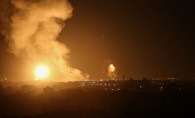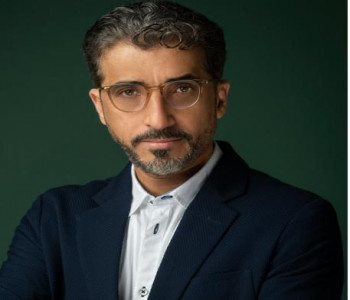Water expert clarifies to Jusoor Post steps Egypt should have taken regarding GERD
Water expert clarifies to Jusoor Post steps Egypt should have taken regarding GERD
The conflict over the controversial Grand Ethiopian Renaissance Dam (GERD) between Egypt, Ethiopia and Sudan has re-sparked recently after Ethiopian Foreign Minister Demeke Mekonnen announced in June that the fourth filling of the under-construction dam’s reservoir will start in early July until the end of August.
This conflict goes back to May 2011 when Ethiopia started the construction of the $4.8-billion dam on the Blue Nile, one of the tributaries of the Nile River, despite the rejection of downstream countries Egypt and Sudan because the dam construction “negatively affects” their water shares. Since then, the three countries conducted tripartite talks amid international mediation by the African Union, the United States and the World Bank, while Ethiopia continued building the dam and “unilaterally” filling its reservoir with water over the past three years without reaching a final agreement with the other two countries.
In an interview with Jusoor Post, Abbas Sharaky, an Egyptian professor of water resources at Cairo University, spoke about what Egypt should have done to secure its share of the Nile water when it resorted to the United Nations Security Council (UNSC) to reach a final agreement with Ethiopia regarding the stranded issues of the operation of the dam and the mechanism of filling its reservoir.
In 2020 and 2021, Egypt and Sudan resorted to the UNSC to reach a final agreement. However, in September of the same year, the UNSC encouraged the three countries under the brokerage of the African Union, saying, “The Council called upon the three countries to take forward the African Union-led process in a construction [sic] and cooperative manner. It also underscored that this statement does not set out principles or precedent in any transboundary water disputes.”
There are two vital issues related to the controversial dam that Egypt should have presented before the UNSC, Sharaky said, clarifying that Egypt did not bring forward the six agreements signed between Egypt and Ethiopia regulating transboundary water between both sides, although it should have after the latter said that it disavowed these agreements because “they [the agreements] were reached during a colonial era.”
There are six agreements related to the Nile water between Egypt and Ethiopia, but without specifying Egypt’s share of the Blue Nile water. The agreements were signed in 1891, 1902, 1906, 1926 and 1993, and then finally in 2015 between Egyptian President Abdel Fattah El-Sisi and Ethiopian Prime Minister Abiy Ahmed, Sharaky said.
Egypt’s Nile water share (55.5 billion cubic meters) is stipulated according to two agreements in 1929 and 1959 between Egypt and Sudan, whose share is 18.5 billion cubic meters, not Ethiopia.
“However, Ethiopia did not respect these agreements. Ethiopia says that these agreements are colonial because they occurred at the time of colonialism. Although, any agreement during the time of colonialism is not considered canceled, otherwise all border agreements at the time of colonialism would have been canceled,” Sharaky explained.
The non-recognition of border agreements that include water-related items means not recognizing border demarcation, and this is what caused a problem for Ethiopia with Sudan when the first announced it did not recognize “the colonial agreements,” the expert said.
In May 2021, Sudan announced it might reconsider Ethiopia's sovereignty over the Benishangul-Gumuz region, where the Renaissance Dam is being built, “if Addis Ababa continues to evade international agreements, especially the 1902 agreement [Addis Ababa Agreement] that also drew the borders between the two countries and granted Ethiopia the land of Benishangul” in return for not constructing any works on the Blue Nile.
At that time, the Sudanese Foreign Ministry stated that renouncing previous agreements by Ethiopia would also mean that Addis Ababa would give up its sovereignty over the Benishangul region.
The Addis Ababa Agreement between Britain and Ethiopia was signed on May 15, 1902. Article 3 of the agreement, which Britain signed on behalf of Sudan, stipulated: “The Ethiopian Emperor Menelik II promises not to build or allow the construction of any works on the Blue Nile, Lake Tana, or the Sobat River that would prevent the flow of water to the Nile except by an agreement between the British government and the government of Egypt in Sudan.”
After the Sudanese statement, Ethiopia announced that there were no problems and that they would be resolved according to the 1902 agreement that draws the borders, Sharaky said.
“There are agreements that Ethiopia disavowed unilaterally; instead of one agreement, there are six agreements. Egypt did not bring it up at the Security Council,” he said, adding, “What was highlighted is that there is a project [the construction of the dam] and there is a dispute over this project that is taking place, and we differ on the number of years with regard to water storage.”
The threats of the dam
According to Sharaky, the second matter that should have been discussed at the UNSC is showing how the dam poses threats against the downstream countries [Egypt and Sudan] and consequently poses a very severe threat to peace and security in the region, as it could be vulnerable to collapse.
Considering that the Security Council is concerned with maintaining international peace and security, it is necessary to discuss the dangers of the dam, because Sudan is exposed to annihilation in the event of the dam’s collapse, he added.
Sharaky clarified that the dam’s capacity is greater than the original design that was supposed to store 11 billion cubic meters, as the current design is able to store 73 billion cubic meters.
The only hydrological studies on the impacts of the dam construction on the environment and societies are preliminary, he continued, adding that these studies were made by an international panel of experts (IPoE) from the three countries, in addition to four international experts.
He noted that the 24-page study recommended that more studies must be conducted on the dam.
Sharaky clarified that if the dam’s reservoir is full amid non-stop rains, or if a large earthquake occurred there, the dam would be venerable to collapse and Sudan would perish.
Egypt exercises restraint
Egypt has been exercising restraint, especially over the past 12 years of negotiations and adhering to international legitimacy and laws, Sharaky said, adding that Cairo avoids using military power because of the presence of the Aswan High Dam.
The High Dam’s water reserve can cover any dangers that the Renaissance Dam might cause, he added, saying, “This does not mean that we give up our right. If the High Dam, whose reservoir’s capacity reaches 162 billion cubic meters, did not exist, Egypt would not wait one year in the negotiations.”
In addition to this, Egypt’s national projects of establishing water treatment plants and groundwater uses increased its per capita share of water from 500 to 800 cubic meters and secured the water reserves of the High Dam, although such projects cost billions of Egyptian pounds, he said.
Sharaky added that the High Dam protected Egypt during the first, second, and third water fillings of the Renaissance Dam, which totalled 17 billion cubic meters of water, and it is able to continue to hold enough water even if the fourth GERD filling is huge and ranges from 20-25 billion cubic meters.
“The storage of 25 billion [cubic meters] certainly may affect Egypt's share, where 60% of Egypt’s water comes from the Blue Nile,” he added.







